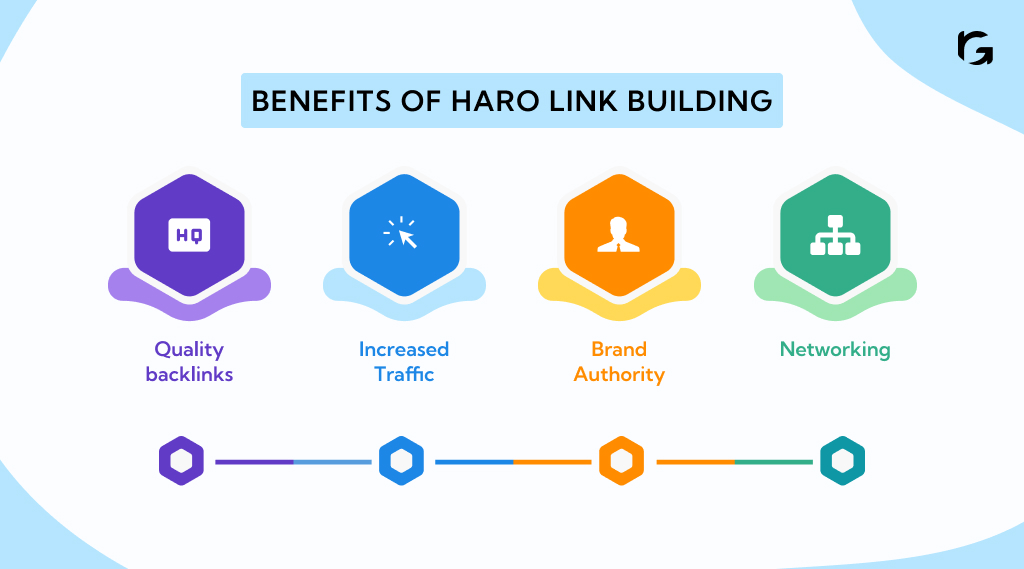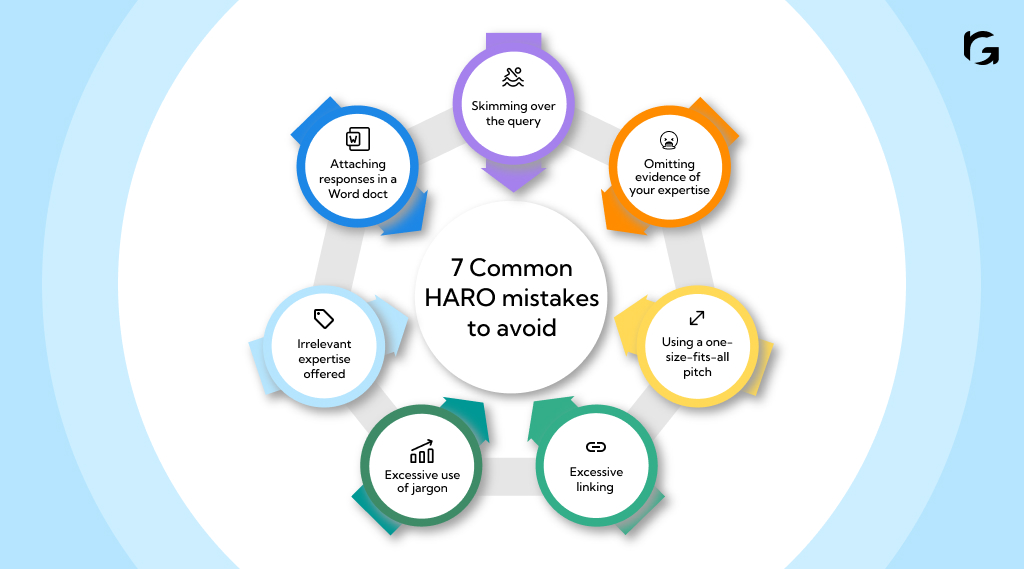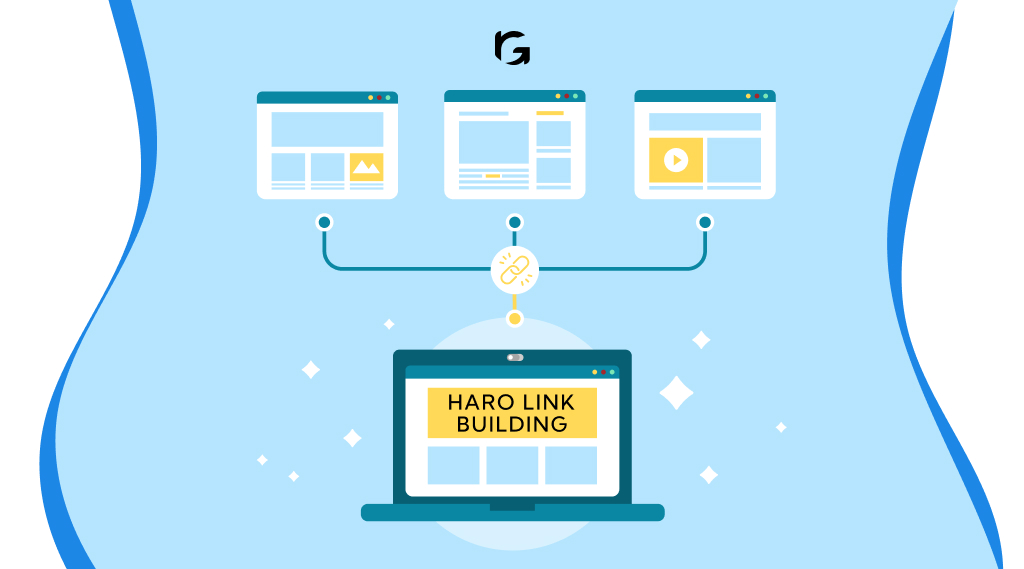Introduction
HARO, or Help a Reporter Out, has become a favorite link-building tool for SEO experts. It’s popular because it helps you get links from big-name websites like Forbes, The New York Times, and Mashable.
Founded by Peter Shankman in 2008, HARO has become a valuable resource for media professionals seeking credible sources and for individuals and businesses looking to gain media exposure. HARO operates on a simple premise: journalists post queries, and sources respond with relevant information.
What is HARO link building?
HARO is a tool that helps journalists find people who know a lot about certain topics. This helps them write better articles. It also helps business owners and people who start businesses get noticed on Google SERP. They don’t need to spend a lot of money on advertising or any PR agency.
When journalists ask for help on HARO, they often get many replies. They pick the ones which they like the best. Usually, they include a link to the person’s website in their article. This helps both, the journalist and the person who is giving information.
The journalist gets good content, and the person gets noticed and links to their website. Win-win!
What are the benefits of HARO link building?
Using HARO can help your business in many ways, especially when it comes to getting more links to your website:

- Quality backlinks
- Increased traffic
- Brand authority
- Networking
Quality backlinks
HARO provides opportunities to get backlinks from reputable websites and publications. These high-quality backlinks can improve your website’s search engine rankings.
Increased Traffic
When your website is mentioned in a popular publication, it can drive relevant traffic to your site. This traffic is more likely to convert into customers or clients.
Brand Authority
Being featured in well-known publications can enhance your brand’s authority and credibility in your industry. This can help you attract more customers and business opportunities.
Networking
HARO allows you to connect with journalists, bloggers, and influencers in your industry. This can lead to valuable relationships and collaborations that can benefit your business.
How to do HARO link building?
These steps should help make the concept of HARO link building more accessible and practical for anyone looking to enhance their online presence or authority:
- Gauge website traffic
- Customize to your needs
- Show your expertise
- Be quick to respond
- Simplify user experience
- Await further input
- Success isn’t guaranteed
- Build lasting connections
- Keep track of your progress
- Set alerts for opportunities
- Have a strategic vision
1. Gauge website traffic
Imagine you have an interesting story to tell. You want to share it where many people can hear it, right? That’s what you do here. Check how popular and trusted websites are asking for help.
Before you rush to answer a question from a reporter, take a moment to see if their website is a place with more traffic.
2. Customize to your needs
Offer help on topics you have knowledge about. Look for questions about subjects and fields you know inside and out. Being subject matter experts, your answers will be stronger, and you’ll have a better chance of being noticed by reporters.
3. Show your expertise
Now that you’ve found a question you can answer, it’s time to show why you’re the hero they need. This doesn’t mean bragging about every little thing. Instead, mention the big wins or experiences that make you a trustworthy source. Tell them why you’re the right person to help, like your job or experience.
4. Be quick to respond
Reporters are always racing against deadlines. Try to answer the reporter’s question fast, ideally within half an hour. By answering their questions super fast, you make their job easier and increase your chances of getting picked.
5. Simplify user experience
Your answer should be so clear and interesting that the reporter can almost copy and paste it into their story. Give answers that are easy to turn into a story or fact that stands out. Use short sentences and bullet points to make your points.
6. Await further input
After sending your answer to a journalist, it’s best to wait for them to get back to you. Following up too much can annoy them and might hurt your chances of being chosen. Give them some time because they’re likely sorting through lots of responses and will reach out if they need more from you.
7. Success isn’t guaranteed
Understanding that not every answer you send will be picked is very important. The choice of which contributions to use depends on many things, like what the story needs and how many people answer. If your answer doesn’t get chosen, don’t see it as a failure.
Instead, think of it as a chance to learn and get better at giving the kind of answers reporters are looking for.
8. Build lasting connections
When a journalist uses your information, it opens the door to start building a working relationship with them. This connection is valuable because it can lead to more chances to work together in the future.
Staying in touch and showing you’re ready to help again can make the journalist think of you first for their next story. This kind of relationship is good for both of you, helping you get more visibility and the journalist to get reliable information.
9. Keep track of your progress
It’s a good idea to write down every time you respond to a journalist, noting whether your information was used or not. This record-keeping helps you see what’s working and what isn’t. Over time, you can use this information to get better at answering, focusing on the types of responses that get picked more often. This way, you learn to give the kind of help that journalists are most likely to use, making your efforts more successful.
10. Set alerts for opportunities
Using tools such as Google Alerts can help you stay updated on new questions that match what you know a lot about. By setting up these alerts, you make sure that you hear about opportunities to share your knowledge right when they come up. Following these you won’t miss out on chances to help journalists and get your name out there to contribute effectively.
11. Have a strategic vision
Think of HARO as just one part of a bigger plan to make yourself or your business more visible online. It’s important to also focus on other things like making great content, being active on social media, and connecting with people in your field.
When you combine these activities with HARO, you create a stronger strategy that can help you get noticed more. This way, you cover all your bases, ensuring that you’re not just relying on one method to build your online presence.
7 Common HARO mistakes to avoid
Avoid these 7 common mistakes when responding to HARO requests:

- Skimming over the query
- Irrelevant expertise offered
- Attaching responses in a Word document
- Using a one-size-fits-all pitch
- Omitting evidence of your expertise
- Excessive use of jargon
- Excessive linking
1. Skimming over the query
People often rush and don’t fully understand what the journalist is asking for.
How to avoid: Take your time to read and deeply understand the query before responding. Make sure your answer is what the journalist is looking for.
2. Irrelevant expertise offered
Sometimes, people respond to queries that don’t match their knowledge or experience.
How to avoid: Only respond to queries that fit your expertise. If you don’t know much about the topic, it’s better not to respond.
3. Attaching responses in a Word document
Journalists get lots of responses and prefer not to open attachments.
How to avoid: Write your response directly in the email so it’s easy for them to read right away.
4. Using a one-size-fits-all pitch
Sending the same response to everyone doesn’t work well.
How to avoid: Customize your pitch for each journalist to match their style and what they need.
5. Omitting evidence of your expertise
It’s important to show you’re an expert in your field.
How to avoid: Include examples of your work, qualifications, or notable people you’ve worked with to prove your expertise.
6. Excessive use of jargon
Using too much technical language can be confusing.
How to avoid: Keep your pitch simple and clear. Avoid using too much jargon.
7. Excessive linking
Too many links can make your email look like spam.
How to avoid: Only include a few important links, like to your website or portfolio, to keep your email professional.
5 HARO alternatives to boost your link-building efforts
Here are 5 alternative ways to get more links for your website, like HARO, but with their own unique features and costs:
- Source Bottle
- Terkel / Featured
- Muck Rack
- PitchBox
- ProfNet
Source Bottle
This is a great website for bloggers, journalists, podcasters, or small businesses to find people to quote in their work easily. It’s free to use, but you only get two emails a day. If you want more, you can pay $25 a month for extra features. It’s special because it tells you when someone is looking for information about what you’re good at.
Terkel / Featured
This is a place where people who make content, like agencies and small businesses, can work with experts to get smart answers and insights. You can use it a bit for free, but if you want more, you have to pay $99 or $199 a month. Big companies can ask questions, and the best answers get turned into an article.
Muck Rack
This is a bit like HARO but with more tools for PR. It costs about $5,000 a year. It’s good for journalists and influencers who want to connect with experts easily. It helps get your message to the right people without much work.
PitchBox
If you’re looking for something like HARO but with more features, this is it. Prices range from $200 to $1,500. It helps you find potential clients by sending emails automatically, saving you time and effort. You should try a demo to see how much it will cost for what you need.
ProfNet
Run by the same company as HARO, it’s quite similar but also connects PR agencies with journalists and experts. After a free trial, it costs $1,500 a month, which might be too much for new businesses.
Wrap up
Different from many ways of making links, HARO, and similar services are great for getting good links and news mentions. Using HARO to make links is a top method for getting quality links.
When you use HARO and other similar options in your SEO plans, you can get better links than your competitors that they can’t copy easily. Remember, you need to be patient and give good answers to questions.
Even though it takes some work, the benefits you can get make it worth the effort.
Want to know more about backlinks? Read our blog to learn about different types and improve your website’s SEO.
FAQs
1. What is the full form of HARO?
Answer: The full form of HARO is “Help a Reporter Out”.
2. How much should I pay for link building?
Answer: The price for getting links to your website depends on how reputable those websites are, how tough your competition is, and the method used to get those links. It could cost anywhere from a couple hundred to a few thousand dollars every month.
3. What is the success rate of HARO?
Answer: Your chances of success with HARO depend on how good and relevant your responses are to what journalists need. Success rates vary widely, but regularly sending in well-thought-out answers can improve your chances of getting noticed and picked.
4. How often are HARO queries sent out?
Answer: HARO sends out queries three times a day: morning, afternoon, and evening, from Monday to Friday.
5. Can I use HARO for any industry?
Answer: Yes, HARO covers a wide range of industries including business, health, technology, lifestyle, and more. There are queries relevant to nearly any field.


